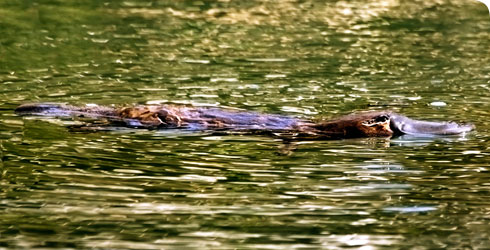Distribution and ecology
Distribution
The platypus is endemic to Australia, where it is dependent on rivers, streams, and bodies of freshwater.
It is present:
- in eastern Queensland and New South Wales
- in eastern, central, and south-western Victoria
- throughout Tasmania
- on King Island
- at the western end of Kangaroo Island, where an introduced population is established (Carrick et al., 2008)
Its occurrence is reasonably continuous within some catchments but discontinuous in others, such as the Bega River catchment in New South Wales (Lunney et al., 1998). In many catchments its actual distribution is poorly known.
In Victoria, fewer than 200 individuals occupy the Wimmera-Avon River basin (distributed over an area of more than 2,400,000 hectares), and the species appears to have recently become extinct in the neighbouring Avoca River basin (unpublished data from the Australian Platypus Conservancy and personal communication from T. Grant, S. Munks, F. Carrick, and M. Serena).
The species also appears to be extinct from its former range in the Adelaide Hills and Mount Lofty Ranges in South Australia (IUCN, 2009).
Habitat
The platypus is restricted to streams and suitable freshwater bodies, including some shallow water storage lakes and ponds (Carrick et al., 2008).
When not foraging in water, the animals normally occupy a resting or nesting burrow in earth banks, although some individuals have been found resting in accumulated stream debris or in low dense vegetation.
The species is seldom observed moving on land in mainland Australia, but is frequently seen out of the water in Tasmania.
Trophic Strategy
The platypus feeds almost exclusively on benthic invertebrates, especially insect larvae, but also:
- crayfish
- snails
- tadpoles
- worms
- small fish
(Nowak, 1999)
